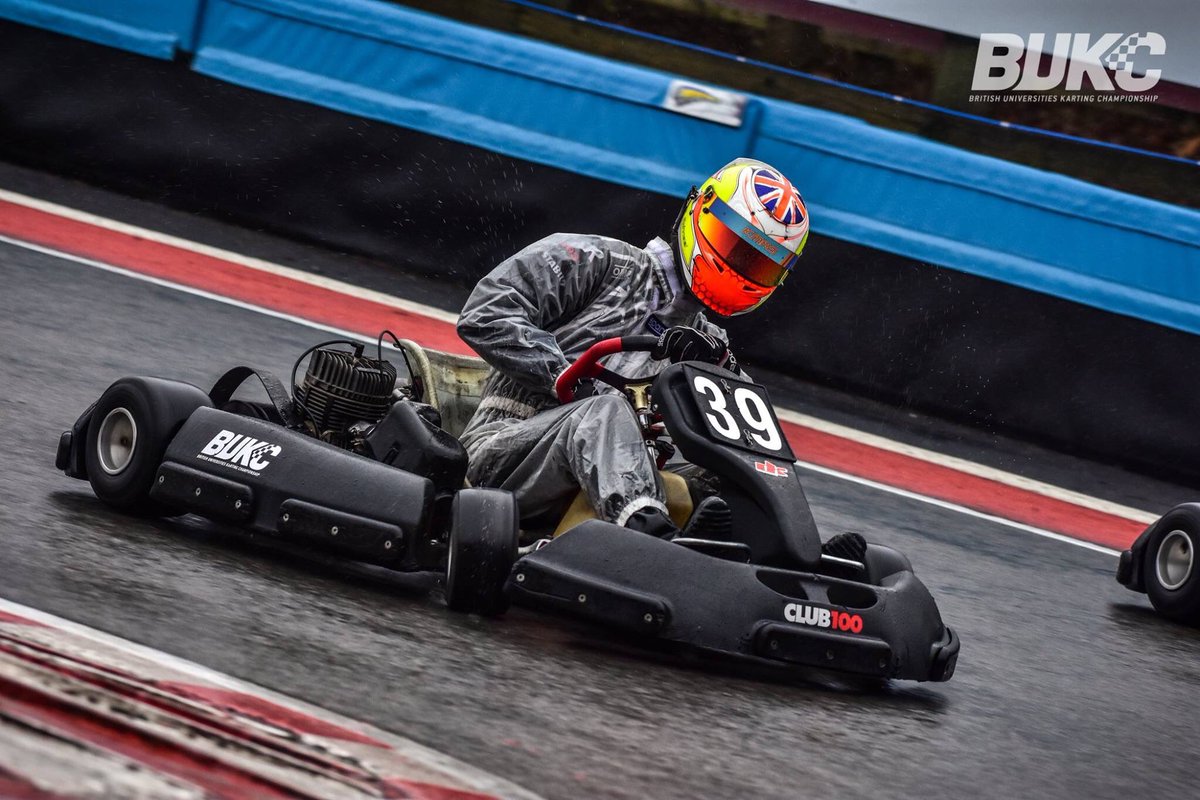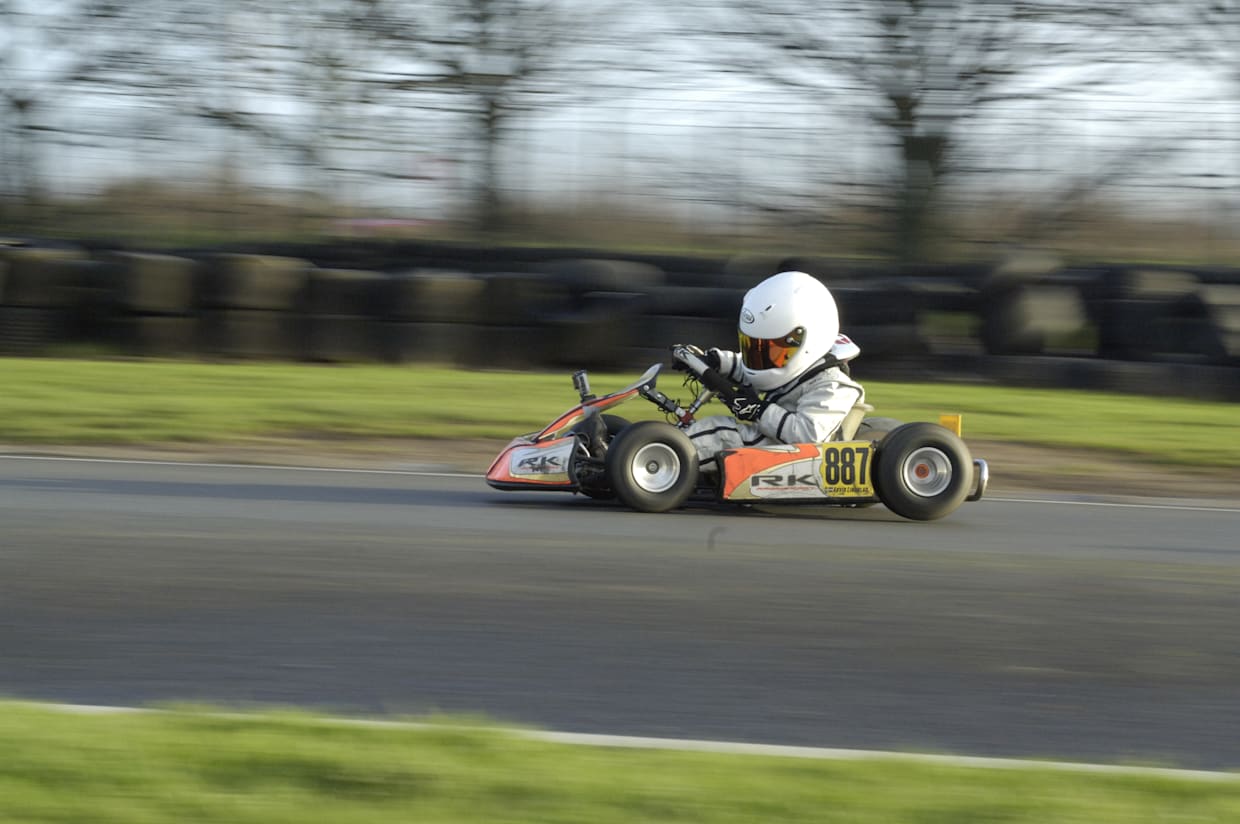Intro
At Driver61, we understand that the majority of motorsport enthusiasts are keen to get involved with the sport. Often, the easiest way to do this is to get into Karting.
Go-Karting has evolved dramatically over the last 20 years and is now one of the fundamental stepping stones into serious competitive motorsport. With almost the entire F1 grid compromising of young karting stars, it is easy to see the appeal.

Whether you have been karting before or you are a complete beginner, the racing driver within you will always want to be competitive. Driver61 has put together our Top 5 Tips to get you battling at the front of any Karting experience at any circuit.
If you haven’t already, check out our Drivers University here for more driving techniques.
1. Study the track and watch the fast drivers
If you get the chance, arrive at the track early. You’d be amazed how much you can learn by watching other drivers out on the track before you. If you are the first session out, then there is a very strong possibility that you can find onboard footage of the track on youtube.
Let’s break this down into two types of study, the physical watching in real life, and the youtube video reference.
Watching in real life – find a part of the track where you can stand and get the best view of the entire circuit. Goes without saying that only being able to see one corner is great for learning that one corner, but not a lot else.
The next important thing is to watch someone noticeably fast, driving the same type of kart as you (same engine, class, tyres, etc). Preferably the person who is leading a race, or is top of the timing sheets. Again, watching a back of the pack runner is not going to be much use.
The key points you must focus on with that driver are:
- The racing line – what line does that driver follow? Are they wide at turn 3 but tight at turn 4? Do they take lots of kerb here but no kerb there? These are all the types of questions you should be asking.
- Braking points – this is the point on the circuit where the brakes are applied. This should be easily noticeable. Make mental notes of where these points are and apply them to your driving.
Online videos – it is important to try and find onboard clips of drivers that are using the same karts you will be using. As mentioned above, same engine, weight, tyres etc. It is also important to try and match the track conditions. For outdoor circuits, if it’s going to rain, find a wet clip.

https://motorsport.tv/fia-karting/video/onboard-fia-karting-world-championship-tuukka-taponen/27281
The difficult thing to know with a YT video is if the driver is fast. When watching the footage back, your main points of focus will again be, the racing line and braking points.
From a YT video, it is easier to memorise the sequence of corners and to learn an entire lap. You need to be able to visualise the entire circuit in your head before sitting in the kart for the first time.
Understand which corners are flat out, which corners lead onto straights and which involve heavy, medium or light braking. Knowing all of these is essential to learning a track quickly and effectively.
2. Smoothness on the steering wheel – the push and pull method.
In high-level karting one of the most talked-about driving technique is smoothness on the steering wheel. It is drilled into all high performing kart racers.
THE NUMBER ONE KARTING MISTAKE:
it is imperative that your hands DO NOT MOVE ON THE STEERING WHEEL when driving a kart. This is probably the #1 mistake that new drivers make. Hold the steering wheel at either a 9 and 3, or, 8 and 4 position and do not move them from that position!!!
Unlike a road car, go-karts have incredibly positive steering, there is no need to shuffle your hands to make a bend. Full steering lock in a go-kart is enough to make any turn.
An important concept to understand is that in all forms of driving, especially karting, if the steering wheel is not straight, the kart is not accelerating as fast as it should. Therefore you want to reduce the amount of turning you do to its absolute minimum.
This will require you to make one smooth, fluid motion on the wheel when cornering. No sudden jabs. No turning a little bit, then a lot, then even more, then straight again. One motion through the corner.
If you find yourself struggling to make small, smooth steering inputs then more than likely you are going either too fast for the bend, or too slow.
Check out this video of Arvid Lindblad at Zuera kart circuit. A RedBull Junior Driver and vice European Champion. Pay close attention to just how little the steering wheel moves.
https://www.youtube.com/watch?v=dOaLTPK_GFQ
The ‘Push and Pull’ method is a style of driving concerning the way you move the steering wheel. With your hands in the 9 and 3 positions, when turning, you should pull the steering wheel towards you with your lower hand and push away from you with your upper hand.
For example, when turning right, your right hand will need to pull on the wheel to the lower position, whilst your left hand should push on the wheel to the upper position. The normal steering method is to lift and drop the wheel using your hands and shoulder muscles. By using the ‘push pull’ methd you rely more on your chest and back muscles which are stronger and have greater control.
This is a strange thing to get used to at first if you are familiar with driving a road car.
3. The overtaking rule
If you find yourself in a position on track to make an overtake, there is one golden rule that you should always follow.
If you are close enough to touch the kart in front, then you are close enough to pass.

It is all too common to see faster drivers restricted by slower karts in front. By following this golden rule, it gives you the confidence to pass. Knowing the tracks best overtaking places is beneficial to the process.
Often, the best opportunities for overtaking in karting are the heavy braking zones. Braking a fraction of a second later than your opponent on the inside of the corner will almost always put you ahead.
The reason this rule works – go-karts are very short, the distance from the front to the back is roughly 200cm’s for Senior classes and 150cm’s for Cadet classes. The driver sits in the back quarter of the kart, which means they can see almost the entire kart in their peripheral vision.

When going for an overtake, you only need a very small percentage of the kart alongside for the driver in front to see you. So, if you are close enough to touch the kart ahead, then you are close enough to be side by side and you are close enough for the overtake.
In most cases, the racing line allows for you to sneak up the inside into heavy braking zones. Just don’t leave the move too late. Last-minute dives don’t always allow enough time for the drivers to notice you.
4. Making the track shorter
A large majority of race circuits will have a range of slow, medium and fast corners. The racing line is the theoretical fastest path through these corners.
Straight lining corners and bends in the race track allow for you to shorten the distance from A to B. By shortening the track, you save yourself effortless tenths. Finding the places to do this can sometimes be difficult and not always noticeable.
Take a look at this image here. This is Castle Combe race circuit in the UK. This is a racecar circuit but the same principles apply. Easily flat-out, this left-hand bend shows a great opportunity to straighten and cut the circuit, making the distance from A to B shorter.
The Orange line shows the optimal line, no need to run wide, keeping tight to the inside and making the track shorter. The Blue line shows a more relaxed, easier line but makes the distance greater.
In karting, the speeds are much lower, which means that saving track distance is even more important. Cut corners where you can! The fastest line is usually the shortest.
A great way to learn where these spots is to find a track map of the circuit you will be racing at.
Here is another example, GYG Karting circuit in Wales, UK. This track runs clockwise, with the “Timing Line” being the start finish.
Look for the right hand kink in the main straight, just before the “Dragon Straight”. It is a very slight bend in the road, easily flat out but sticking to the inside (right-hand side) will allow for you to save a few meters by the end of the straight.
This is worth tenths in karting!
5. Stay solid in the Kart
Staying solid in the kart does not mean, jump into the seat and lock all your muscles and joints. This would be counterintuitive and pretty painful after a number of laps.
Staying solid in the kart, means keeping your body tight and connected to the kart seat and chassis. Go-karts are very light in comparison to most other vehicles. The drivers, are very heavy and take up a massive percentage of the overall weight of the kart.
For example, a Caterham Academy racecar (a very light car) has a minimum weight limit of 615kg with the driver included, lets say an adult driver is 85kg, this means that the driver contributes to 13.8% of the total weight of the car.
In comparison to karting, the minimum weight limit for Rotax 177 (a kart racing class for heavier competitors) in the UK is 177kg driver included. Again if the driver is 85kg, then this is equal to 48% of the total weight of the kart.
We all know that weight plays a big part in the power and performance of the engine, but it also plays a massive part in the handling. If you imagine a driver that is very floppy (apologies for the use of word), that leans over to the side when cornering, who falls forwards when braking, and flies backwards when accelerating. All of these movements will contribute to the handling of the kart.

https://twitter.com/uhkarting – an example of dramatic leaning
Moving weight will unbalance the kart and cause strange and unpredictable handling characteristics. The best way to combat this is to be tight and firm in the kart. Using your abdominal muscles and neck muscles to stay upright. No leaning, no flopping.
A point to consider here is being comfortable in the seat. If you do not feel secure in the seat then it will be very difficult to stay solid. Ensure you have enough padding to keep your bum snug in the seat whilst still keeping a comfortable reach to the pedals and steering wheel. Do not sit too high, as this will exaggerate any seat movement.
If your kart does not feel comfortable, tell someone! You want to be as tightly squashed in the seat as possible. This will help stop body movement and will keep the kart stiff and predictable when out on track.



